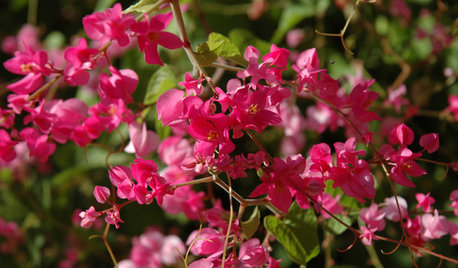If a tomato is a vine...........
growneat
9 years ago
Related Stories

EDIBLE GARDENSSummer Crops: How to Grow Tomatoes
Plant tomato seedlings in spring for one of the best tastes of summer, fresh from your backyard
Full Story
LIFEKitchen Traditions: Tomato Season Meets a Family Legacy
Somewhere a Sicilian great-great-grandmother is smiling at a bowl of American-made sauce
Full Story
LANDSCAPE DESIGNSee 5 Unexpected Ways to Use Vines
Vines can grow over slopes, trail off pergolas and add seasonal color to the garden
Full Story
SOUTHWEST GARDENING10 Flowering Vines for Southwestern Gardens
These resilient, adaptable plants thrive in the region’s extreme climate and provide a variety of garden benefits
Full Story
FARM YOUR YARDHouzz Call: Home Farmers, Show Us Your Edible Gardens
We want to see where your tomatoes, summer squashes and beautiful berries are growing this summer
Full Story
SPRING GARDENINGSummer Crops: How to Grow Strawberries
Pluck your own sweet strawberries right from the garden vine for smoothies, salads or eating then and there
Full Story
GARDENING GUIDESNortheast Gardener's September Checklist
Pluck those tomatoes, enjoy ever-changing grasses and get an eyeful of exuberant zinnias
Full Story
GARDENING GUIDESPacific Northwest Gardener: What to Do in June
Now's the time to prune pines and vines, prevent pests and buy June-blooming plants to keep your garden healthy and beautiful
Full Story
MOST POPULARThe Perfect Houseplant for People Who Kill Houseplants
If you can fill a jar with water, you can keep golden pothos vine happy — and it will pay you back with cleaner air and a greener home
Full Story
GARDENING GUIDESSouthwest Gardener's April Checklist
Welcome the return of roses and herbs, and consider a new use for vines as you rejoice in your newly green spring garden
Full StorySponsored
More Discussions






digdirt2
growneatOriginal Author
Related Professionals
Citrus Heights Landscape Architects & Landscape Designers · Marlborough Landscape Contractors · Medford Landscape Contractors · Rancho Santa Margarita Landscape Contractors · 07920 Landscape Contractors · Amarillo General Contractors · Duncanville General Contractors · Rotterdam General Contractors · Statesboro General Contractors · Okolona Stone, Pavers & Concrete · Blue Springs Decks, Patios & Outdoor Enclosures · Littleton Decks, Patios & Outdoor Enclosures · Miami Decks, Patios & Outdoor Enclosures · Oswego Decks, Patios & Outdoor Enclosures · Palmetto Decks, Patios & Outdoor Enclosurescarolyn137
jean001a
johns.coastal.patio
digdirt2
growneatOriginal Author
carolyn137